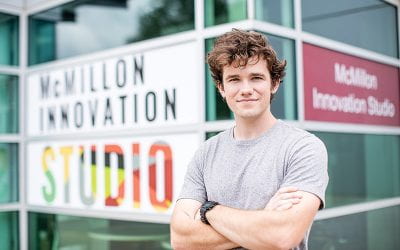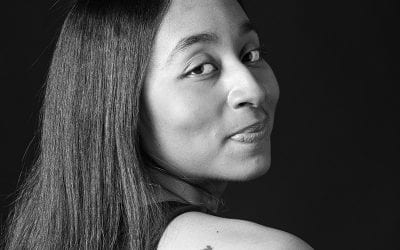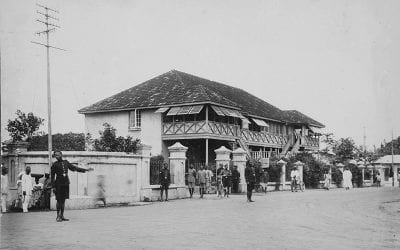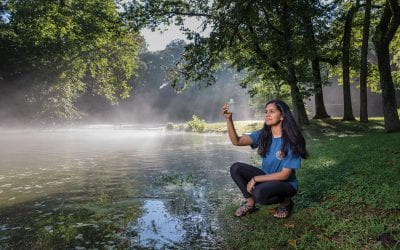
Band Aid
By Hiba Tahir
Photos courtesy of Russell Cothren
Emily Myers, a trumpet player in the Razorback Marching Band, looked around during a high school warm-up one day years ago to discover that — despite an alarmingly high decibel level that “maxed out” an app she used to measure it — none of her high school peers were wearing ear protection. “I couldn’t even hear myself playing, it was so loud,” she said of the experience. “We were all just kind of blasting into each other’s ears.”
Typically, the sound emitted by a marching band can reach 120 decibels or higher — similar to a plane taking off and within shouting distance of a jackhammer. Myers worried about the impact on her classmates’ hearing. “I’ve always been interested in the deaf and hard of hearing community,” she explained. “With new developments in technology, things are getting louder and more damaging. So I was like, if this is just one small group and their hearing is being damaged by this sound alone, how many other people is this affecting everywhere?”
At the time, she felt powerless to do anything about the issue. But when she joined the Razorback Marching Band years later and found a similarly cacophonous scene, she wondered if a major contributing factor might have been the fact that the provided ear plugs weren’t custom-made to fit the students’ ears.
“A lot of people weren’t wearing them because they didn’t curve into their ear right, or their ear shape just wasn’t compatible with the earplugs,” explained Myers, now a senior communication sciences and disorders major. “I tried wearing them once and it felt like I was underwater. I couldn’t hear myself.”
With the help of her mentor Margie Gilbertson, an on-campus audiologist and speech-language pathologist, Myers combined her love for music with her love for audiology and began creating custom earplugs for band members.
The process involves first sending out a survey to find students interested in taking part in the study. “We schedule them for an initial appointment,” Gilbertson said, “and during that appointment, we do a hearing test and some other measures of physiology of the ear.”
From there, Myers takes over, using what she calls “medical Play-Doh” to construct the earplugs.
“I make the base, fit them for it, bore out a hole through the center, place a filter in tubing and then put that through the hole,” Myers explained. Then, she ties a string through a little plastic screw with a hoop on its end, so that students can wear the earplugs around their neck. “That makes them easier to pull out, too,” she said.
She recalled running into some early obstacles: “It was kind of difficult at first to get the hang of how to get the ear molds fitted really well to each person. It took a couple of tries.” Additionally, she had problems working with the silicone sealant she uses to seal the molds. She said it would “eat through” every container she used. “I had a little plastic Dixie cup, and it had a little bit [of sealant] in it, and I thought it was going to be fine. And then I was sitting there with a participant … and I look over and the cup is just melted, and the silicon’s starting to spread. Figuring out how to get the ear mold in smooth, to where it wasn’t totally obstructing the entire ear — we had that problem a couple times. And then sometimes, it just wouldn’t come out quite right, so I’d have to redo it. It took some practice, but we got better!”
She said the materials required to create two custom ear molds cost around $40 — a stark contrast from the $300 it would cost to make them “in the industry.” Myers’ goal is to have students wear the earplugs for every rehearsal and every performance — “Basically, anytime we’re in a big group and we’re playing,” she said.
At the end of the season, Myers sends out the earlier survey again to see if the students’ answers have changed. Students then return for another round of screenings and to give in-person feedback. “We’re trying to collect data on if we had an impact,” Gilbertson explained. “Are they wearing these custom molds more often? If so, why? What do they like about them? And what can we still improve? We’re not expecting hearing to improve, but we’re hoping to maintain it — to keep hearing loss from being early on-set in these people.”
Myers said that custom fitting the earplugs definitely had a positive impact on students’ desire to wear them. “Most of the people we initially surveyed that were not wearing ear protection or wearing it very little; by the end of the study, they were.” Now when she looks around the practice field, Myers can see bright colors in her fellow band members’ ears, protecting their hearing as they make great music.
Myers’ research was supported by an Honors College research grant.
“Most of the people we initially surveyed that were not wearing ear protection or wearing it very little; by the end of the study, they were.”
More Field Notes
Driving Innovation
Nick Foster, Lauren Horne, Colby Reed and Robbie Prettyman examine the prototype for a laser lighting system in the McMillon Innovation Studio.By Kendall CurleePhotos courtesy of Philip ThomasTruck drivers keep our economy moving and currently, they’re in short...
Linking Fate + Future
By Katie Wilson PowellPhotos courtesy of Russell Cothren When it comes to politics, what impacts your opinions? When you fill out your race or ethnicity on the census, do you struggle with which box to check? These are key questions that Esmeralda Verdin Gomez...
Exploring National Identity By Design
By Brock DeMark Photos courtesy of Jim Tschetter/IC360 Images and Russell CothrenHonors architecture major Anna Ibru grew up in Lagos, Nigeria, in a neighborhood graced by many colonial-era bungalows on expansive lots. “My whole life revolved around buildings like...
Probing Pollution at Lake Keith
By Samantha Kirby Photos courtesy of Russell Cothren and Chieko Hara If you’ve ever traveled along Highway 112 to Northwest Arkansas National Airport, you’ve likely passed Lake Keith on your way through Cave Springs. But you can’t be faulted for not noticing: On...
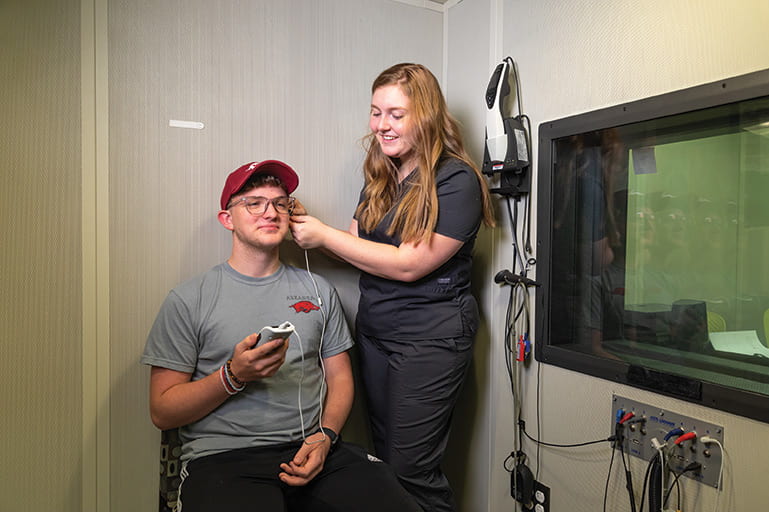
Emily Myers prepares her brother Brett, a freshman percussionist in the Razorback Marching Band, for a hearing test.
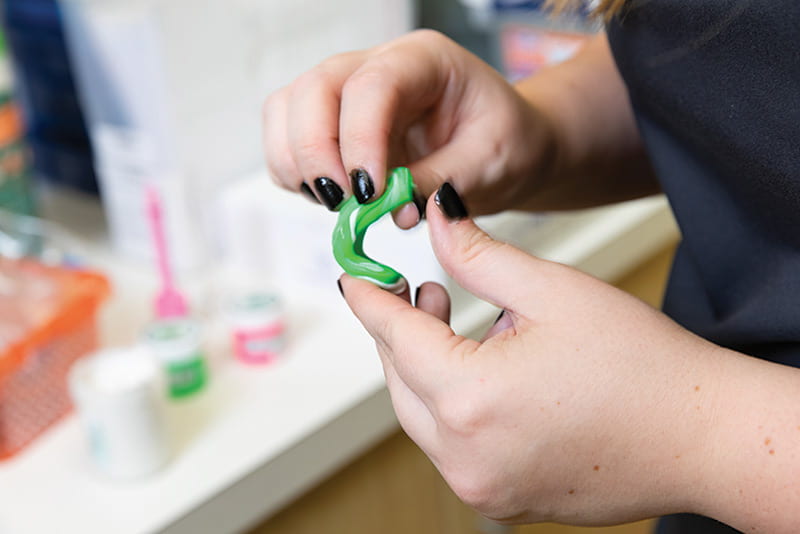
Myers shapes the “medical Play-Doh” into custom-fitted earplugs.


